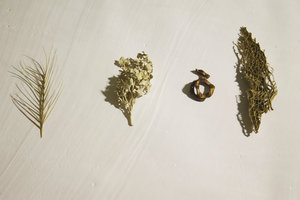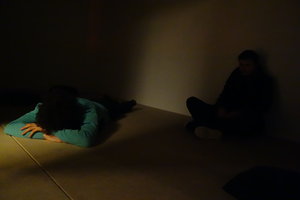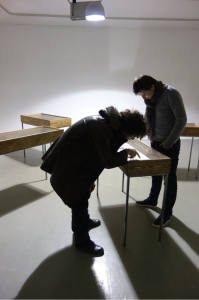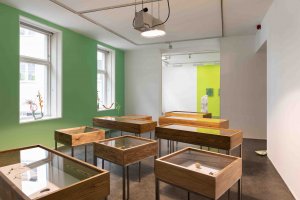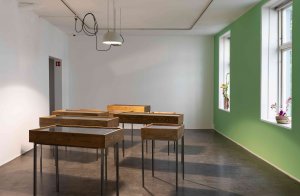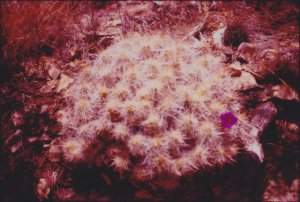Desert garden
2020-2021
Part of Ground Control, Bildmuseet, Umeå, curated by Clelia Coussonnet.
https://www.bildmuseet.umu.se/utstallningar/2020/m...
2019-2020
Part of Leave No Stone Unturned, Le Cube, Rabat, curated by Clelia Coussonnet.
https://lecube-art.com/exposition/leave-no-stone-u...
2019
Part of Show Me Your Garden, Kunstnerforbundet, Oslo, curated by Kari Skippervold.
https://kunstnerforbundet.no/utstillinger/1260/vis...
2017
EARWITNESS, CD Publication, Barcelona
Desert Garden and Other Tales
This piece puts recordings I have made in different places on the same time frame: the border between the Western Sahara and Algeria, Algeria, Mongolia. the U.S. and the Limpopo region of South Africa. Although far apart, these places are brought together by their geological aspects. These dry and deserted lands are or have been the theater of tensions and despair, but also a silent witness of solidarity and collective actions.
The narrative goes through bits of information, oscillating between different atmospheres, languages and contexts.
https://www.earwitness.org/releases

2015
Gallery BOA, Oslo
Desert Garden, solo exhibition
I use desert landscapes as a physical and mental space of reflexion. A ground in constant metamorphosis that I consider being an archive of all beginnings, times and action. Sahara, Chihuahua or Gobi share the same definition of dry and empty lands. It is in these “waste” and “abandoned” lands that I collect clues and attempt linking it to my practice, which consists of performance, texts, sound and diverse mediums.
Since 2012, I have started collecting information on desert plants and their potential use by First Nations, desert inhabitants and migrants: nutritional, medicinal, magical. Desert Garden (2015) at Galleri BOA in Oslo was the first materialization of this project. The result is a collection of desert seeds and plants from which the knowledge remains incomplete. I do not wish to classify these botanical samples. The first reason is that I consider desertification and colonisation of these places an universal phenomena. The second reason is that I strongly believe that classifying plants, animal - and people - have to some extend lead to a devalorization and rejection of some humans and species.
For the next public moment of this project, there will be new seeds and plants added to the collection, more specifically: new materials from Western-Sahara and Mangystau desert (Kazakhstan). My plans are also to extend my fieldwork to the Middle-East region.
Article Kunstkritikk (in Norwegian): http://www.kunstkritikk.no/kritikk/sjamantropologe...
Press release:
“Prickly pear, Joshua Tree, Buffalo gourd, Candelilla, Honey locust, Tree tobacco, Anacua, Cholla, Agave, Lechuguilla, Creosote Buch, ... I can’t guarantee that all these herbs presented here have the medicinal value or use which is claimed for them. But one thing is certain, these properties are unknown to the average modern individual; and the authentic compilation of knowledge which has been kept secret by Indians and Mexicans is a valuable contribution to our intellectual heritage.
When I start getting the flu, I don’t monkey with it. I go to bed. I take antibiotics and antihista- mines. I drink orange juice copiously. I have a fever thermometer; I keep a chart of my temperature: I keep warm, and I am usually in bed for three or four days until the fever begins to break.
When my Mexican employee starts to get flu, he takes a concoction of herbs and keeps right on working; and in 7 years he hasn’t missed a day. My ranch at Temecula is bounded on two sides by an Indian reservation, and I became acquainted with the Indians and their medicine and saw some very remarkable cures made by the use of herbs. So it was only natural to start studying and collecting these herbs, and then writing about them. Much of this knowledge is rapidly disappearing from human ken – which is a shame, because the people who have this knowledge are getting old, and won’t be with us forever.” *) **)
*) Modified Foreword by Erle Stanley Gardner about “Desert Plants and People” written by Sam Hicks in 1966
**) “Many Native Americans come to our shop to ask information on the seeds we are collecting and selling. It seems like the knowledge around their use has completely disappeared from their common knowledge and daily life.” Extract from a discussion with a gardener and desert seed seller, Prescott (USA), 2013

